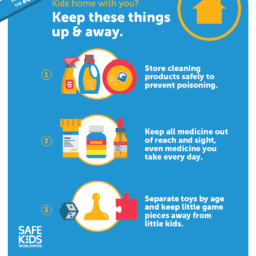
Learn Why Workplace Safety Is So Important
American workers in the United States are provided the
safest working conditions. In spite of the stress and tedious
types of work performed, the government works tireless to
insure that the place you work is free from dangerous elements that
threaten you health as well as your life.
The government has not always been as benevolent to the working
class. but as society evolved, so did the concern for human beings
who was often injured or disabled in work related accidents.
To provide guidelines and regulations to protect the safety of workers,
OSHA was established.
The regulations that govern workplace safety are under the auspices
of The U.S Department of Labor and enforced by federal law and OSHA.
OSHA was established as the result of The Occupational Safety and Health
(OSHA) Act in 1970 and amended in 1990. The overall goal of the Act is to
insure that employees do not suffer harm from occupational exposure.
The Occupational Safety and Health Administration (OSHA), has several key
responsibilities including:
- Developing and issuing occupational safety and health
standards and regulations - Conducting investigations and inspections to determine the
status of compliance - Issuing citations and proposes penalties for noncompliance with the regulations
- Performing public education and consultation
The enforcement of the OSHA’s safety and health standards is implemented by
individual state agencies. But this act applies to virtually all private
employers in the United States. If the employer has more than 10 employees,
The statutes of the OSHA laws bind them.
Federal and state employees however, are exempt from direct coverage.
OSHA’s attention focuses on environmental contamination in the workplace.
The standard for toxic and hazardous substances is specifically outlined
in OSHA. The exposure limits are provided in terms of 8-hour averages as
well as 15-minute short-term exposures.
Section 201 states. “Environmentally preferable” means products or services
that have a lesser or reduced effect on human health and the environment when
compared with competing products or services that serve the same purpose.
This comparison may consider raw materials acquisition, production, manufacturing,
packaging, distribution, reuse, operation, maintenance, or disposal of the product or
service.
In addition, a series of requirements are placed on employers to provide protection,
training, information, and monitoring of employees potentially exposed to hazardous substances.
Two other standards are of relevance to the chemical industry:
The process safety management (PSM) standard (29 CFR 1910.119) is designed to prevent or
minimize the consequences of catastrophic releases of toxic, reactive,
flammable and explosive chemicals.
The PSM rule requires employers subject to the rule to have an emergency action plan
which specifies the procedures for reporting fires and emergencies.
The rule covers, among other things, emergency response operations for releases or
threat of releases. Covered employers must develop an emergency response plan which
includes emergency alerting and response procedures.
In addition to OSHA’s specific standards, section 5(a)(1) of the OSH Act also contains
an enforceable general duty clause, which covers situations for which no standard exists.
The clause requires employers to provide a place of employment, which is free from recognized
hazards that are causing or are likely to cause death or serious physical harm to employees.
It is important that both employers and employees understand the scope and purpose of OSHA
statues. By being informed, the workplace becomes safer for the employer, employee and the
community at large.
workplace.com
#Learn #Workplace #Safety #Important
Will be pleased to have you visit my pages on social networking .
Facebook page here.
Twitter account is here.
Linkedin account here
Post byBedewy for info askme VISIT GAHZLY


